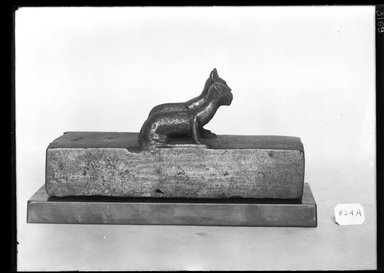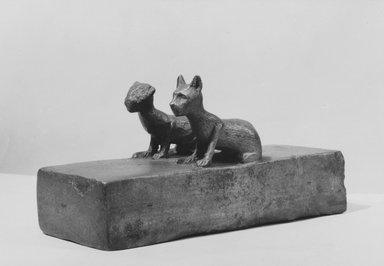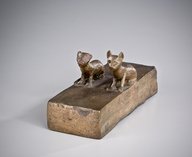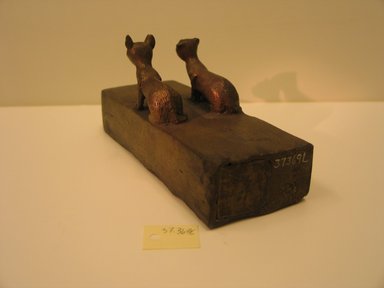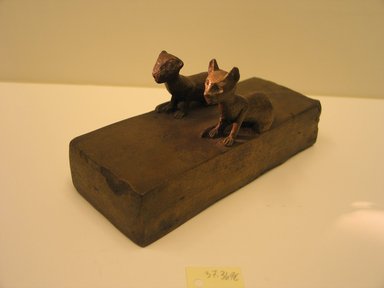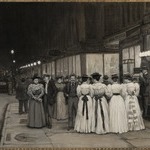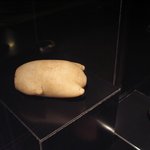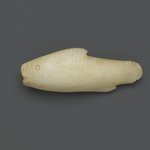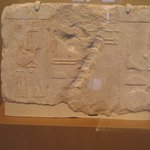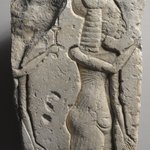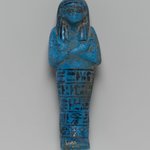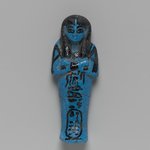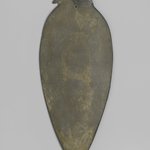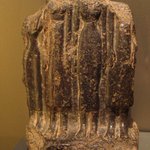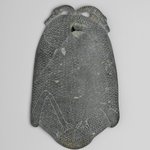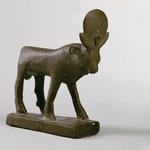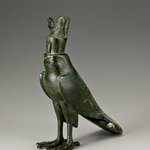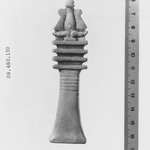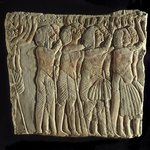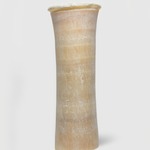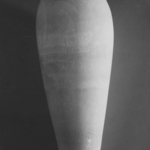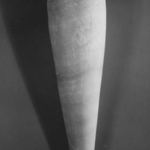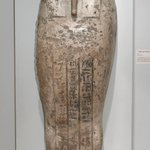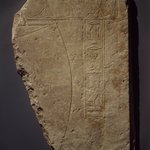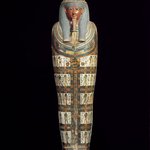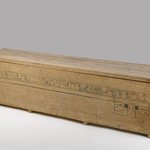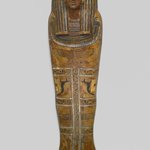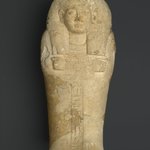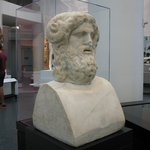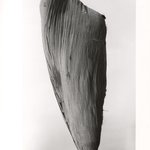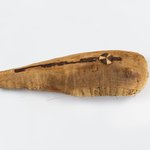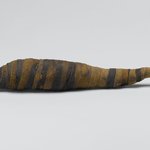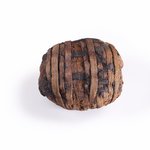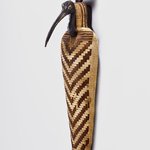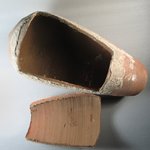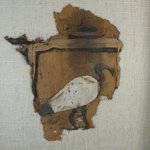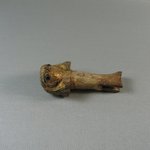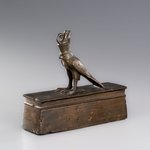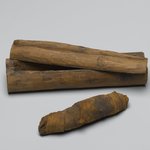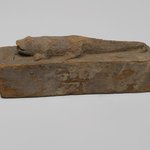Kitten Coffin
Egyptian, Classical, Ancient Near Eastern Art
This coffin, dated by carbon 14 testing of the linen wrappings found within it, is among the oldest of the animal mummies on view in this exhibition. The figurines of kittens, together with the animal mummies inside the coffin, form a bridge between votive figurines and votive animal mummies. Both kinds of objects were intended for the same purpose, to send a request to a god. But votive animal mummies were an innovation at the time this object was made.
MEDIUM
Bronze, animal remains, linen
DATES
850–540 B.C.E.
PERIOD
Third Intermediate Period to Late Period
DIMENSIONS
3 1/8 x 2 3/8 x 6 1/4 in. (8 x 6 x 15.8 cm)
(show scale)
ACCESSION NUMBER
37.369Ea-b
CREDIT LINE
Charles Edwin Wilbour Fund
CATALOGUE DESCRIPTION
Animal coffin with the remains of two individuals. Bronze "brick" surmounted by two kittens seated next to each other, facing the long way, about halfway back. Facing them, the cat on the right is in a better state of preservation. His face is distinguishable. The cats have long, thin, almost exaggerated necks. Their tails lie on the block, curling around toward the left and ending by the front paws. The front legs are nearly vertical. The cats are resting on their derrieres. Their ears are in an "alert" position. Their bodies are incised with lines simulating fur, their toes with "toe" marks. The "brick" they are seated on is a tiny coffin for the cats.
MUSEUM LOCATION
This item is not on view
CAPTION
Kitten Coffin, 850–540 B.C.E. Bronze, animal remains, linen, 3 1/8 x 2 3/8 x 6 1/4 in. (8 x 6 x 15.8 cm). Brooklyn Museum, Charles Edwin Wilbour Fund, 37.369Ea-b. Creative Commons-BY (Photo: Brooklyn Museum (Gavin Ashworth,er), 37.369Ea_Gavin_Ashworth_photograph.jpg)
IMAGE
component, 37.369Ea_Gavin_Ashworth_photograph.jpg. Brooklyn Museum photograph (Gavin Ashworth, photographer), 2012
"CUR" at the beginning of an image file name means that the image was created by a curatorial staff member. These study images may be digital point-and-shoot photographs, when we don\'t yet have high-quality studio photography, or they may be scans of older negatives, slides, or photographic prints, providing historical documentation of the object.
RIGHTS STATEMENT
Creative Commons-BY
You may download and use Brooklyn Museum images of this three-dimensional work in accordance with a
Creative Commons license. Fair use, as understood under the United States Copyright Act, may also apply.
Please include caption information from this page and credit the Brooklyn Museum. If you need a high resolution file, please fill out our online
application form (charges apply).
For further information about copyright, we recommend resources at the
United States Library of Congress,
Cornell University,
Copyright and Cultural Institutions: Guidelines for U.S. Libraries, Archives, and Museums, and
Copyright Watch.
For more information about the Museum's rights project, including how rights types are assigned, please see our
blog posts on copyright.
If you have any information regarding this work and rights to it, please contact
copyright@brooklynmuseum.org.
RECORD COMPLETENESS
Not every record you will find here is complete. More information is available for some works than for others, and some entries have been updated more recently. Records are frequently reviewed and revised, and
we welcome any additional information you might have.
Can you give us a simple explanation of carbon dating?
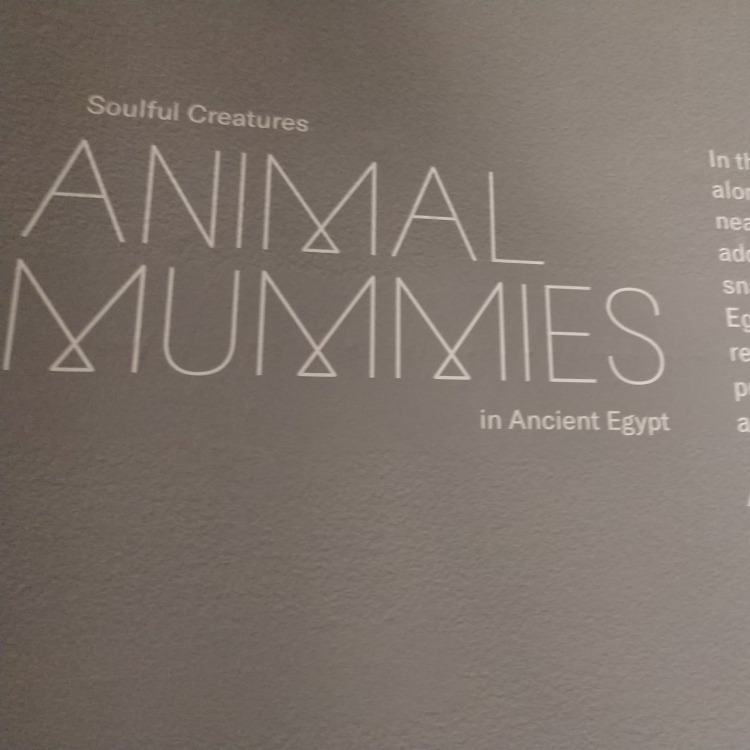
Carbon dating, or C14 dating, analyzes a particular isotope of carbon which decays at a very predictable rate. By measuring how much has decayed in contrast to how much is still left, scientists can estimate how long ago something (or someone) died.
Carbon dating can only be conducted on organic material (plants, animals, people).
In terms of dating the animal mummies, which material is used?
The animal mummies in this exhibition that have been dated: scientists analyzed the remains of the animal itself and the linen that the mummies are wrapped in.
Linen is made from plant material so the same analysis can be performed.
Thanks so much.
You're welcome!


